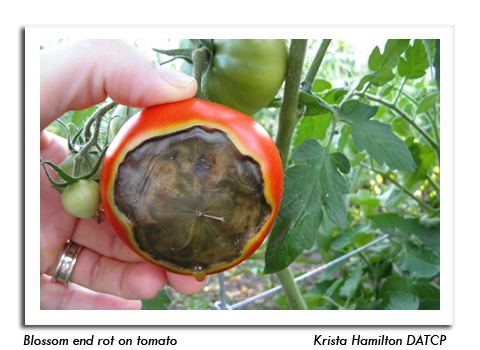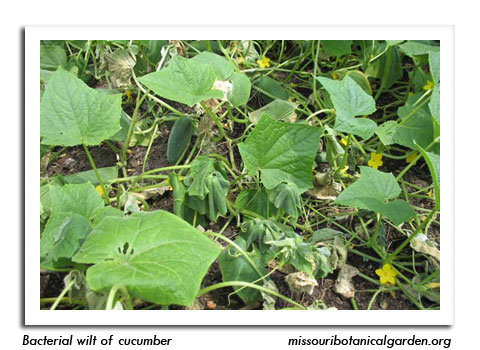
 |
|
|
Vegetables
Volume 62 Number 14 Date 08/03/2017 BLOSSOM END ROT - This disorder of tomatoes, peppers, watermelons and squash is developing in gardens as tomatoes ripen. The dark, water-soaked lesion that starts at the blossom end of the fruit and enlarges around the fruit surface is caused by calcium deficiency and inconsistent soil moisture levels. Blossom end rot is a physiological problem that cannot be controlled with fungicides and insecticides. Maintaining even soil moisture levels throughout the season usually reduces the occurrence of blossom end rot. SQUASH BUG - Adult and nymphs are very active in pumpkin and winter squash plantings across the state. Vegetable growers should continue to inspect the undersides of leaves for the metallic bronze eggs, deposited in groups of 15-40 between leaf veins or on stems, as long as small nymphs are present. Squash bugs are capable of damaging mature fruit, thus control may be needed as the crop nears harvest. OMRI-listed materials include PyGanic, insecticidal soaps and certain oils. CORN EARWORM - Counts have been consistently low (<10 moths per trap per week) since the first migrants began appearing in pheromone traps four weeks ago. Large flights have not been recorded at any monitoring location as of August 3. BACTERIAL WILT - Reports indicate this insect-transmitted disease is developing on cucumbers in western Wisconsin. Bacterial wilt is vectored by the yellow and black striped cucumber beetle. Infestations of 4-5 beetles per 50 plants are considered high and signal an elevated risk of damage. EUROPEAN EARWIG - Earwigs are abundant this year in vegetable and flower gardens, greenhouses and basements, and are likely to remain so for several more weeks. Minor damage to arugula, beans, lettuce, hostas, marigolds, potatoes, roses, sweet potato vine, Swiss chard and many other plants is common. Rainy weather in June and July has contributed to the high populations of this nocturnal, moisture-favoring pest. -- Krista Hamilton, DATCP Entomologist 





|
|
|